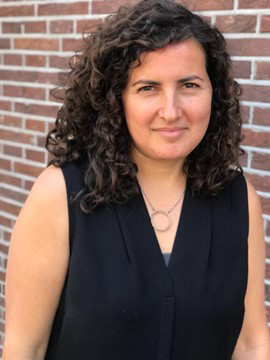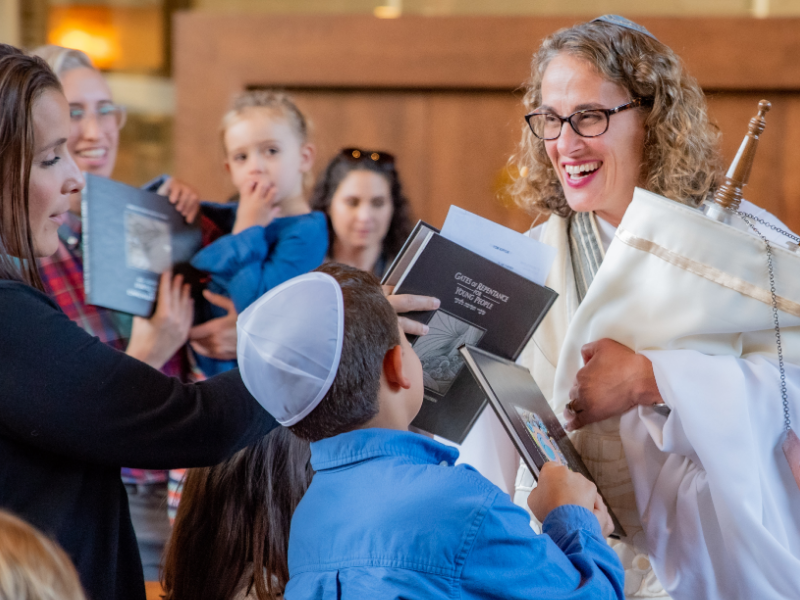
This article is adapted from Dasee Berkowitz's first book, "Becoming a Soulful Parent: A Path to the Wisdom Within" (Kasva Press, 2021).
In the beginning, God created the heavens and the earth. The earth was unformed and void, and darkness was upon the face of the deep, and the spirit of God hovered over the face of the waters. God said: “Let there be light.” And there was light. God saw the light, that it was good; and God divided the light from the darkness. God called the light Day, and the darkness God called Night. There was evening and there was morning, one day (Genesis 1:1–5).
Have you ever wondered why the Bible bothers to tell us about the initial chaotic state of the world? Why doesn’t it just directly continue with “And then there was light” (vayehi or)? Life would be so much easier that way. So much more efficient. You begin, you create the container (heaven and earth), and then you focus on content. “Light! Insight! Keep it positive, people!”
But the Torah doesn’t begin that way. Deeply embedded into the fabric of existence, from the very beginning of mythic time, is something called tohu va’vohu. “The earth was without form and void (tohu va’vohu)” (Genesis 1:1–2).
What is this mysterious tohu va’vohu? Why is it situated right at the beginning of time? Tohu can be translated either as “chaos” or as “emptiness.” It is an uncultivated state of being, untouched by the hand of order. But then, as the second verse of Genesis relates, “The spirit of God hovered over the face of the waters.” The chaotic state of the world is calmed and tamed by the consciousness that there is something that guides tohu va’vohu from above.
Maybe in all of the confusion, chaos, and nothingness there is a real “Something” that is whispering to us, calling to us, calming us. Some of us might call this Something “God.” Some might call it a connection to something beyond ourselves that makes for good and brings harmony into the world. Finally, after the chaos comes order, God enters with a clear stage direction: “God said, ‘Let there be light’; and there was light.” From here, order proceeds straightforwardly:
God appreciates the light as “good.”
God makes distinctions between light and darkness. God names the light “day” and the darkness “night.”
There was evening, there was morning: day one.
Sounds like any superhero — when met with a complex mess of impulses and life forces, God elegantly tames them into a manageable, efficient sequence of events. Wouldn’t it be nice if things followed such a clear sequence at home?
I declare, “Breakfast is ready!”
I say breakfast is tasty (everyone agrees).
Children stay at the table, eat breakfast, and clear their plates.
I call what they have done “admirable.”
There was morning, there was breakfast and now we are off to school.
We might prefer the idea that order is always possible, if we only work hard enough, or that our outer lives might radiate this sense of order and control. But our inner lives tell a different story. Our inner lives are full of complexity, inconsistency, and sometimes a sense of confusion (even chaos). Our children might feel this way, too. Instead of acknowledging confusion as a part of life, we are constantly trying to “do” something about it. We perpetuate the myth that if only we had the right plan, the right behavioral modification chart, the right “heart-to-heart talk” with our kids, they will “get over” the tohu va’vohu they might feel inside.
Recognizing that tohu va’vohu is an essential stage in life can help us become less agitated when the clear structure of our lives is derailed. This knowledge can help us become less controlling as parents. Sometimes, the realization that tohu va’vohu impacts us all fails to calm us. In those moments of insecurity and tumult, being open to believing that Something hovers above the chaos can offer a sense of comfort and strength.
Our children’s development is also subject to tohu va’vohu. Understanding this helps give us perspective. Our children’s development is not necessarily linear or direct. Their life experiences, like all of ours, oscillate between ups and downs. We experienced this recently with our son. Last year was a hard year for him. He didn’t respect his teacher. He wasn’t motivated to do his work. Angry outbursts were frequent. My heart sank and I resigned myself, thinking, “I guess this is who he is now.” This year we experienced a turnaround: a teacher he respects, a new close friend whom he loves, a goal of getting into a good middle school that motivates him to apply himself.
Recently, though, his old attitudes resurfaced. He became impatient and obstinate. (Deep inhale.) I started to feel stress, wondering if everything that had been getting better was just an illusion. Naturally, anxiety and concern took over, and I became preoccupied with trying to answer the unanswerable question: “Where will all of this lead?” I worried that my relationship with my son could become more tense.
If I could understand that he — and really all of us — is a mix of tohu va’vohu alongside order and clarity, I might be able to deal with his behavior more calmly. I might even welcome it and say to myself (and even to him), “He is a whole person with lots of different parts. How interesting! Let me ride this new wave of how he is presenting himself to us. I’m grateful that he’s showing me.”
Many of us have, at one point, thought that every problem needs to be met with a solution from a consultant or specialist. In our culture, we over-diagnose. We give our children the illusion that everything can be cured. We rush to intervene. In doing so, we deny two aspects of who our children are: They are kids who grow and change. Their developmental stages won’t last forever. Each child is unique. Each one has a unique personality and set of sensitivities that will grow and evolve but probably never completely disappear (nor would we want them to).
Tohu va’vohu can become a code phrase for the sense of chaos that accompanies each child’s new developmental stage. We can be so concerned with — and, if we admit it to ourselves, even afraid of — each stage that we are not willing to let our children experience their own growing pains. The boy who clings to his mother every morning before entering his classroom does so because he experiences anxiety at his new school. He will feel calmer at some point, and he will enter the classroom on his own! The girl with high-pitched screams, demanding to be the center of attention, will eventually learn to share airtime at home. Most likely, they will “grow out of it.”
Of course, there are situations with our children that require our attention, intervention, and expert guidance. Wisdom lies in knowing the difference.
Related Posts

9 Jewish Activities to Try When You’re at Home with Kids



